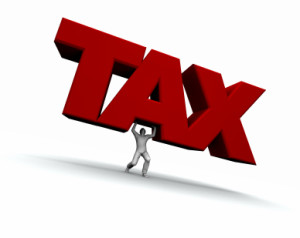If outgoing Governor John Hickenlooper had gotten his way, the State Supreme Court would have struck down either the Taxpayer’s Bill of Rights (TABOR) provision on tax increases, or the Gallagher Amendment’s limits on residential property taxes. Either way, the result would have been bad for Colorado taxpayers.
Fortunately, the Court rejected his recent interrogatory on the matter, but don’t expect this issue to go away. For years now, Democrats have been pointing to the interplay between the Taxpayer’s Bill of Rights, passed in 1992, and the Gallagher Amendment, passed in 1982, as a reason to gut one or the other.
TABOR requires that any increase in a general tax rate – income, sales, or property taxes, for example – must be put to a vote of the people affected.
The Gallagher Amendment affects property taxes. It requires that the statewide ratio between the amount collected from commercial property tax and residential property tax stay constant at 55-45. To enforce this, the residential property tax assessment rate slides at a uniform level across the state.
Most commercial property is assessed at 29 percent.
With the run-up in property values in the developed areas, the assessment rate on residential real estate has dropped from roughly 21 percent in 1983 to 7.2 percent currently. The rate is projected to fall even farther in the coming year. For much of the state, this has been a boon. Even as rates fell, total inflation-adjusted property tax revenues rose from $1.35 billion in 1982 to $8.97 billion in 2017.
But some rural school districts, fire districts and other taxing districts haven’t seen the appreciation in residential property values that the Front Range counties have, so their revenue from property taxes has declined. And since incomes in many of those rural areas also lag, residents are loath to vote to increase property taxes to compensate.
The result, according to Hickenlooper, is an unforeseen conflict between TABOR and Gallagher. The interrogatory he submitted asked the Court to resolve the question.
But both Hickenlooper’s premise, and approach, are wrong. Had the Court taken up his offer to unilaterally amend the state constitution, the results could have been catastrophic for many of the state’s residents.
Hickenlooper claims that rural districts have no way out of this bind. But that’s not true. The Gallagher Amendment contains a provision for freezing the assessment rates at their current levels. Several districts have done that; residents of the Inter-Canyon Fire Protection District did so in the November election, by a 75-25 vote.
![]() More than that, they can vote to have the mill levy float inversely to the assessment rate. As the assessments drop, the mill levy can rise to make up the difference.
More than that, they can vote to have the mill levy float inversely to the assessment rate. As the assessments drop, the mill levy can rise to make up the difference.
Between the two options, voters approved more than 100 of 120 such requests on the ballot this fall by a variety of local governments, including many fire districts. The lesson is clear: far from being broken, Gallagher is working exactly as intended. It continues to protect urban and suburban homeowners from being taxed out of their homes. At the same time, it allows voters in rural fire, school, and special districts to stabilize the district’s receipts, if the district makes the case that that’s necessary.
But don’t expect those agitating for a “solution” to go away. Instead, expect the legislature to propose “fixes” under the guise of helping rural Colorado. A special committee has already referred three possibilities to the full legislature: repealing Gallagher outright, splitting it into three regions, or having the state temporarily backfill fire districts and libraries. Expect other options to be on the menu.
If Gallagher’s main provisions go, it would effectively double many people’s property taxes overnight. This would bring on the nightmare scenario that Gallagher was designed to avoid –people being forced out of their homes.
When Gallagher was passed in 1982, Howard Jarvis’s Proposition 13 tax revolt in California loomed large in the legislature’s thinking. Rising property values meant rising property taxes, which meant that older citizens and those on fixed incomes were having to sell their homes, often at distress prices. Colorado has avoided that result over the last few decades in large part because of Gallagher.
With Gallagher gone, many people who had saved their whole lives so they could own their homes outright and retire mortgage-free would be forced out of their homes by property taxes. They’d be left with few options. They could pay exorbitant Denver rents, which would eat up an ever-larger portion of their incomes. They could buy a smaller place, with a diminished quality of life and no guarantee that they wouldn’t have to sell again. Or they could move farther out, if they could find a place, away from the support system of friends, and losing the benefits of aging in place.
The domino effect would harm the cities themselves. They would become less diverse as they lost their older populations. Residential property would become even more concentrated in even fewer hands, and the percentage of rental properties would rise.
And all of this is unnecessary, because districts have had the power to effect their own fixes all along.
Joshua Sharf is a fiscal policy analyst at the Independence Institute, a free market think tank in Denver.


